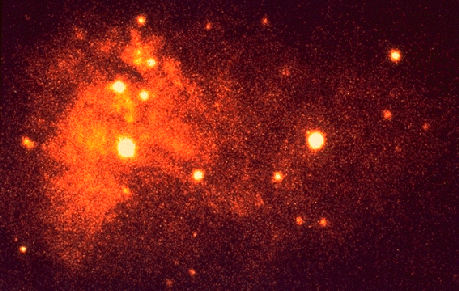Explanation: The strongest source of X-rays in the Large Magellanic Cloud originates from an unusually energetic binary star system. This strong source, dubbed LMC X-1, is thought to be a normal and compact star orbiting each other. Gas stripped of the normal star falls onto the compact star, heats up, and emits X-rays. The X-rays shining from the system knock electrons off atoms for light years around, causing some atoms to glow noticeably in X-rays when the electrons re-combine. Motion in the binary system indicates the compact star is probably a black hole, since its high mass - roughly five times that of our Sun - should be enough to cause even a neutron star to implode.
1998 1999 2000 2001 2002 2003 2004 2005 2006 2007 2008 2009 2010 2011 2012 2013 2014 2015 2016 2017 2018 2019 2020 2021 2022 2023 2024 |
Январь Февраль Март Апрель Май Июнь Июль Август Сентябрь Октябрь Ноябрь Декабрь |
NASA Web Site Statements, Warnings, and Disclaimers
NASA Official: Jay Norris. Specific rights apply.
A service of: LHEA at NASA / GSFC
& Michigan Tech. U.
|
Публикации с ключевыми словами:
black hole - LMC - черные дыры - Малое Магелланово Облако - двойные звезды - рентгеновские двойные
Публикации со словами: black hole - LMC - черные дыры - Малое Магелланово Облако - двойные звезды - рентгеновские двойные | |
См. также:
Все публикации на ту же тему >> | |
